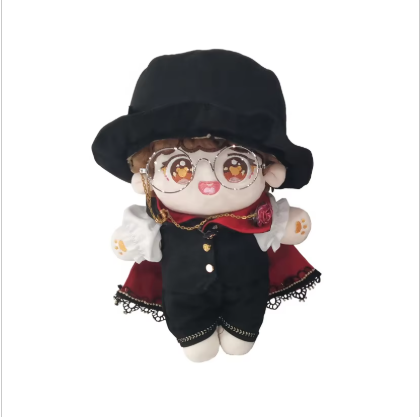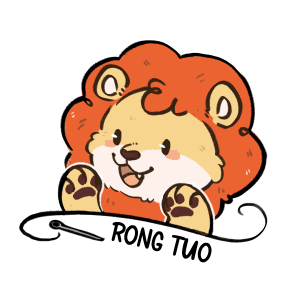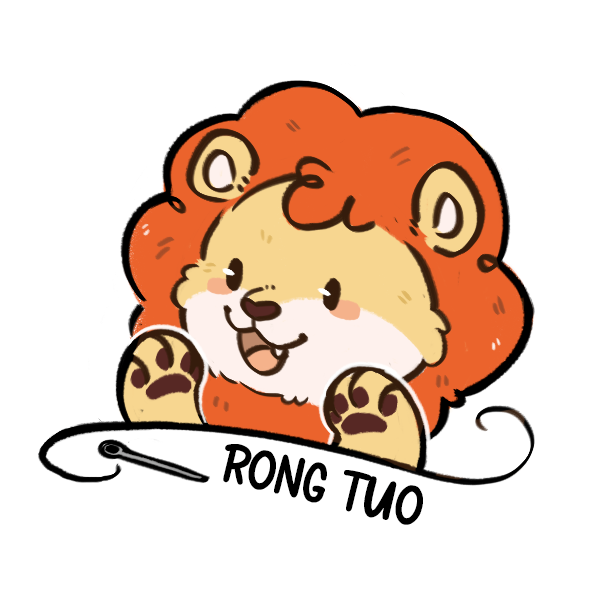플러시 장난감의 일반적인 표면 소재: 최고의 선택을 위한 가이드
다음과 같은 경우 인형 장난감 , 표면 소재는 그 느낌과 외관, 내구성에 큰 영향을 미칩니다. 매우 부드럽고 포근한 친구부터 튼튼한 놀이 친구까지, 올바른 소재는 플러시 장난감을 더 오래 사랑받을 수 있게 해줍니다. 맞춤형 플러시 장난감을 제작하거나 어린이를 위해 구매하거나 생산용 소재를 선택하는 경우, 일반적인 표면 소재를 아는 것이 완벽한 옵션을 선택하는 데 도움이 됩니다. 가장 인기 있는 플러시 장난감용 소재를 살펴보겠습니다. 인형 장난감 및 그들의 독특한 특징.
1. 크리스탈 울트라-소프트 패브릭
크리스탈 초소프트 원단은 플러시 장난감에 가장 널리 사용되는 소재입니다. 이 원단의 필레(보풀 부분)는 약 0.5mm에서 1mm 길이로 짧으며, 섬유가 조밀하게 배열되어 있어 매끄럽고 균일한 외관에 부드러운 광택을 띱니다. 이름에서 알 수 있듯이 촉감이 매우 부드러워 플러시 장난감이 포근하고 안정감 있게 느껴지며, 어린이들이 안기에는 완벽합니다.
이 원단은 종종 '라이브 파일' 기법으로 가공하는데, 이는 프린팅, 염색 및 섬유를 들어올려 부드러움을 증대시키는 데 도움이 됩니다. 이 원단의 가장 큰 장점 중 하나는 일방향 및 양방향 라이브 파일 방식 중 선택할 수 있다는 점입니다.
- 이방향 활필 : 섬유의 방향을 조정하여 플러시 장난감에 미묘한 무늬를 만들 수 있습니다. 이를 통해 맞춤형 플러시 장난감이 보다 섬세하고 사실적으로 표현됩니다.
- 일방향 활필 : 섬유 방향이 고정되어 있어 균일한 외관을 제공합니다.
어두운 색상일수록 양면 극세사 무늬가 더 뚜렷하게 보이며, 밝은 색상일수록 무늬가 알아보기 어려워집니다. (흥미롭게도) 밝은 색상의 크리스탈 초극세사는 종종 더 비싼 경우가 많습니다. 우수한 다용도성과 부드러움 덕분에 테디베어부터 캐릭터 인형까지, 맞춤형 인형 제품에 가장 많이 선택되는 소재입니다.
2. 스판덱스 초극세사(아일랜드 플리스)
스판덱스 초극세사(아일랜드 플리스라고도 함)는 크리스탈 초극세사보다 더 부드럽고, 짙고 풍성한 극세사를 자랑합니다. 이로 인해 인형이 더욱 탄력적이고 포근하게 느껴집니다. 이 소재의 또 다른 장점은 떨어지는 섬유가 거의 없어 놀이 후에도 바닥에 잔털이 떨어져 있는 일이 거의 없다는 점입니다.
또한 우수한 신축성도 자랑합니다. 늘어나거나 눌려도 원래 형태로 되돌아오는 탄력성이 뛰어납니다. 따라서 스트레스 해소용 인형에 이상적이며, 아이들은 물론 어른들도 꾹 눌러주거나 때렸을 때 탄력 있는 반발력을 느끼며 스트레스를 해소할 수 있습니다.
스판덱스 초극세는 색이 오래 지속되어 세탁 후에도 밝은 색상을 유지하며, 정전기를 방지하여 먼지가 쌓이는 것을 줄여줍니다. 가벼운 솜털 충전재와 함께 사용할 경우, 플러시 베개에 이상적이며 더욱 포근한 느낌을 더해줍니다. 자주 사용하는 플러시 장난감의 경우, 이 소재는 현명한 선택입니다.
3. 펄 플리스
펄 플리스는 표면이 마치 작고 고운 진주들이 모여 있는 듯한 모양에서 그 이름을 얻었습니다. 폴리에스터로만 만들어져 있으며 플러시 장난감에 사용하기에 친환경적인 선택입니다. 가장 큰 장점 중 하나는 보풀이 생기지 않는다는 점으로, 자주 사용해도 섬유 덩어리가 생기지 않아 플러시 장난감이 오랫동안 깔끔하게 보입니다.
크리스탈 소재와 스판덱스 초극세모보다 진주 플리스는 더 두껍고 벨벳 같은 질감에 긴 빌레(털)를 가지고 있습니다. 또한 방수 표면 처리가 되어 있어 습기를 방지하는 데 도움이 됩니다. 이는 놀이방에서 사용되거나 가끔 실외로 가지고 나가는 인형과 같이 청결함을 유지해야 하는 인형에 적합합니다. 수개월 사용하더라도 인형이 언제나 새것처럼 보이길 원하신다면 진주 플리스는 확실한 선택입니다.

4. 모조 토끼털
모조 토끼털은 실제 토끼털처럼 보이면서 부드럽고 풍성하며 고급스러운 느낌을 주는 합성 소재입니다. 이전 소재들보다 털의 길이가 훨씬 길어 25mm에서 45mm까지 다양하여 인형에 풍성하고 긴 빌레(털)의 외관을 줍니다.
이 원단은 부드러운 질감과 뛰어난 '드레이프성'을 지녀 자연스럽게 떨어지는 실루엣을 연출해, 플러시 인형이 보다 사실적으로 보이게 합니다. 다만, 섬유 간 결합력이 약해 약간의 털빠짐이 발생할 수 있습니다. 비록 이러한 점이 있지만, 부드러움과 사실적인 외관 덕분에 토끼, 곰 또는 털이 풍성한 것이 매력 포인트인 다른 동물 형태의 플러시 인형에 널리 사용되고 있습니다.
5. PV 플리스(PV Fleece) (한국형 플리스)
PV 플리스는 한국에서 개발된 소재로, 폴리에스터로만 만들어져 친환경적인 특징을 가지고 있습니다. 이 원단은 인조 토끼 퍼와 유사한 길이와 질감의 표면을 가지고 있으나, 주요한 개선점들이 있습니다.
인조 토끼 퍼와 달리 PV 플리스는 털빠짐이 적고, 필링도 거의 없어 내구성이 필요한 플러시 인형에 매우 유리합니다. 부드럽고 포근한 감촉으로 놀이용 및 인테리어용 인형 모두에 적합합니다. 일상적인 놀이용 플러시 인형이든 장식용 제품이든 PV 플리스는 편안함과 내구성을 동시에 갖춘 최고의 선택입니다.
6. 셰르파(Sherpa)
셔파는 두 가지 주요 유형이 있습니다: 짧은 퍼(short pile, 1–3mm)와 긴 퍼(long pile, 5mm 이상). 찢어짐, 당김, 마모 및 주름에 강한 내구성이 뛰어난 원단으로, 거칠게 사용되는 플러시 장난감에 이상적입니다.
다만 셔파는 신축성이 부족해 거의 늘어나지 않습니다. 따라서 형태가 단단한 플러시 장난감, 예를 들어 구조적인 형태의 채우개 장난감이나 형태를 유지해야 하는 플러시 베개에 적합합니다. 두꺼운 털 같은 질감은 따뜻함을 더해주어 겨울 시즌 플러시 장난감에 인기가 많습니다.
7. 벨벳
벨벳은 폴리에스터 또는 면으로 만들어지며, 전체 표면보다는 플러시 장난감의 작은 부위에 자주 사용됩니다. 코, 눈, 귀 또는 인형 옷과 같은 부위에 일반적으로 사용됩니다.
벨벳은 마모 및 찢어짐에 강해 자주 만져도 견고하게 유지됩니다. 부드럽고 약간 윤이 나는 표면은 고급스러움을 더해주어 털북숭이 인형을 더욱 세련되게 보이게 합니다. 예를 들어, 곰돌이의 귀가 벨벳으로 되어 있거나 공주 인형이 벨벳 드레스를 입고 있을 때, 이러한 디테일이 인형의 외관을 한층 업그레이드해 줍니다.
플러시 인형에 적합한 소재를 선택하는 방법
최고의 소재는 플러시 인형의 사용 목적에 따라 달라집니다:
- ~에 포옹 및 일상적인 놀이 : 크리스탈 초극세사 또는 스판덱스 초극세사(매우 부드럽고 내구성 우수)
- ~에 스트레스 해소용 인형 : 스판덱스 초극세사(뛰어난 신축성과 복원력)
- ~에 보풀이 적은 장기 사용 : 진주 플리스 또는 PV 플리스
- ~에 털이 많고 생생한 동물 모양 : 가죽 토끼 털(긴 털) 또는 PV 플리스(탈모 억제 효과).
- ~에 장식용 또는 구조적 완구 : 셰르파(튼튼함) 또는 벨벳(우아한 디테일).
자주 묻는 질문
플러시 장난감에 사용되는 가장 일반적인 소재는 무엇인가요?
크리스탈 초극세사는 부드러움, 다용도성, 다양한 플러시 장난감에 적합한 특성으로 인해 가장 널리 사용되는 소재입니다.
맞춤형 플러시 장난감에 가장 적합한 소재는 무엇인가요?
크리스탈 초극세사(양방향으로 곱슬한 털)는 디테일한 패턴과 개인화된 디자인이 가능하기 때문에 맞춤형 플러시 장난감에 이상적입니다.
플러시 장난감용 소재 중 탈모에 저항력이 있는 소재가 있나요?
예, 스판덱스 초극세사와 PV 플리스는 탈모에 강해 어지럽혀지는 놀이 환경이나 알레르기가 있는 가정에서 사용하기에 적합합니다.
이러한 소재는 세탁이 가능한가요?
대부분 세탁이 가능합니다. 크리스탈 초극세, 스판덱스 초극세, PV 플리스는 부드러운 세탁 코스로 세탁할 수 있습니다. 평직 토끼털과 셰르파는 손세탁하는 것이 좋습니다.
플러시 장난감 중 깨끗하게 유지해야 하는 장난감에 가장 적합한 소재는 무엇인가요?
펄 플리스는 방수 및 보풀 방지 기능이 있어 오랫동안 깨끗하게 유지할 수 있습니다. 특히 실외나 복도형 놀이방에서 사용하는 플러시 장난감에 적합합니다.
플러시 장난감용 친환경 소재가 있나요?
네, 펄 플리스와 PV 플리스는 모두 재활용이 가능한 폴리에스터 소재로 제작되어 친환경적인 선택입니다.


